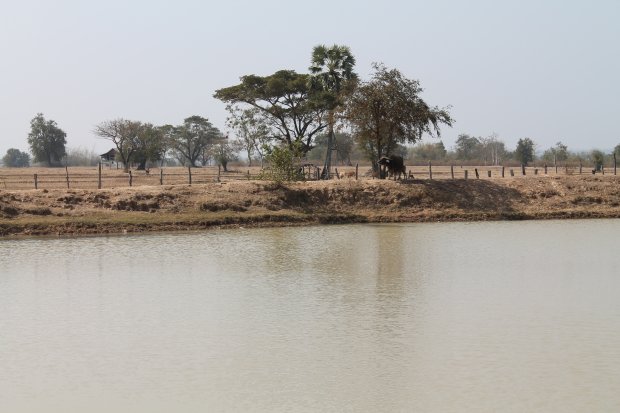A village pond could provide the people of Ban Phailom in Laos with the much-needed water for their vegetables during the dry season but resource access is a serious concern. How were they able to sort out the problem?

In the small village of Ban Phailom, located in central Laos in the province of Savannakhet, water resources during the dry season are extremely scarce. Previous attempts to exploit groundwater resulted in several drilled wells, with one in the front yard of the village school. But farmers quickly learned of rock salt in the region’s geology, thus, all crops in their vegetable garden die because of excess salt coming from the irrigation groundwater. In the absence of river streams, and with salt in the region’s geology, the only viable source of water for the village in the dry season is rainfall stored in natural storages such as ponds.
The valued village pond
Located across the main pathway from Ban Phailom, in close proximity to the 116 households (total population of 669) that make up the village is a unique, large pond. According to the village head, the pond formed naturally, or likely as a result of the ‘bomb cratering effect’ during the Vietnam War, as is often observed in Laos. Due to its shallowness, the pond used to dry up a couple of months after the beginning of the dry season, thus limiting villagers’ water uses to bathing, washing clothes and fishing.
This post originally appeared on the CCAFS web site. Read the full story here.

